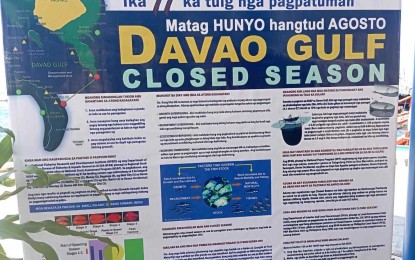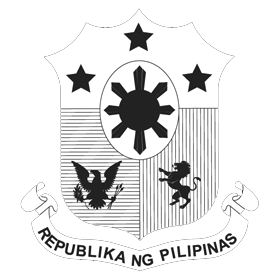
CLOSED SEASON. To preserve the marine resources in the Davao Gulf, the Department of Agriculture’s Bureau of Fisheries and Aquatic Resources 11 (DA-BFAR-11) leads the enforcement of the closed fishing season for pelagic fishes from June 1 to August 31, 2024. The annual closure allows fish stocks to replenish and facilitate the reproduction and growth of marine resources. (PNA photo by Robinson Ninal Jr.)
DAVAO CITY – To preserve the marine resources of the Davao Gulf, the Department of Agriculture’s Bureau of Fisheries and Aquatic Resources 11 (DA-BFAR-11) implemented the 11th year of the closed fishing season for pelagic fishes in the Davao Gulf from June 1 to August 31.
In a statement, DA-11 Director Macario Gonzaga said commercial fishing vessels that use bag nets, ring nets, and small mesh fishing nets would be banned in fishing activities.
Likewise, municipal fishing operators are prohibited, and the ban also applies to commercial fishing with vessels from 3.1 gross tons (GT) to more than 150 GT.
The closed season is formally contained in the DA and Department of Interior and Local Government (DILG) through Joint Administrative Order No. 02, or “Establishing Closed Season for the Conservation of Small Pelagic Fishes in Davao Gulf."
Gonzaga said the annual closure allows fish stocks to replenish and facilitate the reproduction and growth of marine resources, emphasizing that the closed fishing season policy was an important initiative to conserve and protect the fishery resources in the country.
“The 11 years of implementation indicated significant results not only for the protection of our marine resources but also for the benefit of our small-scale fisherfolk”, he said.
Davao Gulf, located in the Southeastern part of Mindanao, is a diverse marine ecosystem spanning 520,000 hectares.
Based on the DA-BFAR scientific studies, Davao Gulf is a key biodiversity area (KBA) in the Philippines, having been identified as one of the 34 biodiversity hotspots in the world. It serves as a feeding ground for 11 species of cetaceans, such as sperm whales, killer whales, and bottle-nose dolphins.
The Gulf is also the nursing ground for five endangered turtle species, including hawksbill, leatherback, and Olive Ridley. It also serves as the final catchment for runoffs, erosion, and effluents from several regional watersheds. (PNA)
 The Philippine News Agency is a web-based newswire service of the Philippine government under the supervision of the News and Information Bureau (NIB) of the Presidential Communications Office (PCO).
The Philippine News Agency is a web-based newswire service of the Philippine government under the supervision of the News and Information Bureau (NIB) of the Presidential Communications Office (PCO).